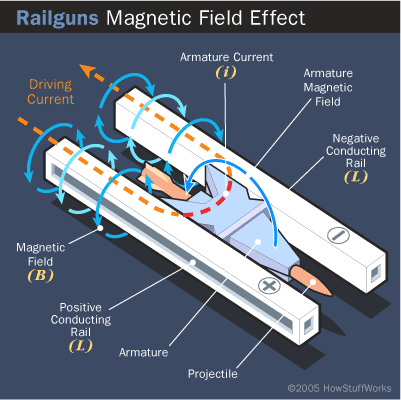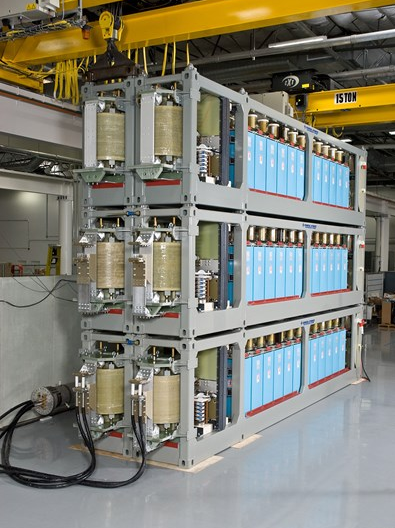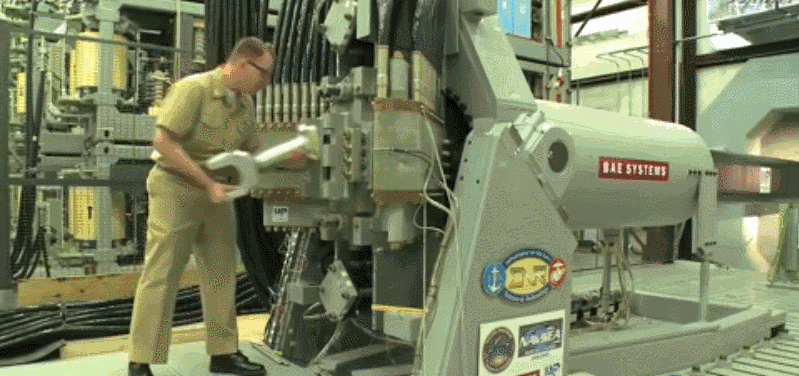How it works  The second picture is one of the many banks of capacitors used to store a build up of charge. Once the capacitors are fully charged up the switch is flipped and all of the built up charge is released. So the more banks of capacitors you have combined with a larger voltage the greater the flow of current and a faster speed.  The third picture
gives an example of a projectile in a casing and
what the projectiles look like. There are no
explosive heads, just a lot of kinetic energy.
 The fourth picture is the barrel built specially to with stand the stress and heat caused by firing. They are hoping to achieve somewhere between 5 to 10 shots a minute with this super barrel.  The fifth picture shows a projectile a few moments after being fired and the casing that holds it in the barrel is separating. The casing is needed to conduct the current and drive the whole thing down and out. The sixth picture is a front view of one being fired, although there is fire this has nothing to do with an explosion or accelerant. As you can see there is a shock wave moving in front of the projectile, the fire actually comes from the projectile moving so fast through the air that it is causing the air to catch fire. It is exactly like a spacecraft re-entering the atmosphere and causing the air around it to burn due to friction. The seventh picture can give you an understanding of just how much kinetic energy these things are packing. It passes through all 7 plates and then into the catch area at the end. One test was done that it was shot through a one inch plate several yards away and after passing through that plate it continued for several more kilometers. The last picture shows one of the plates that it went through and gives you a decent understanding just how much force one of these rounds can deliver. |
|
